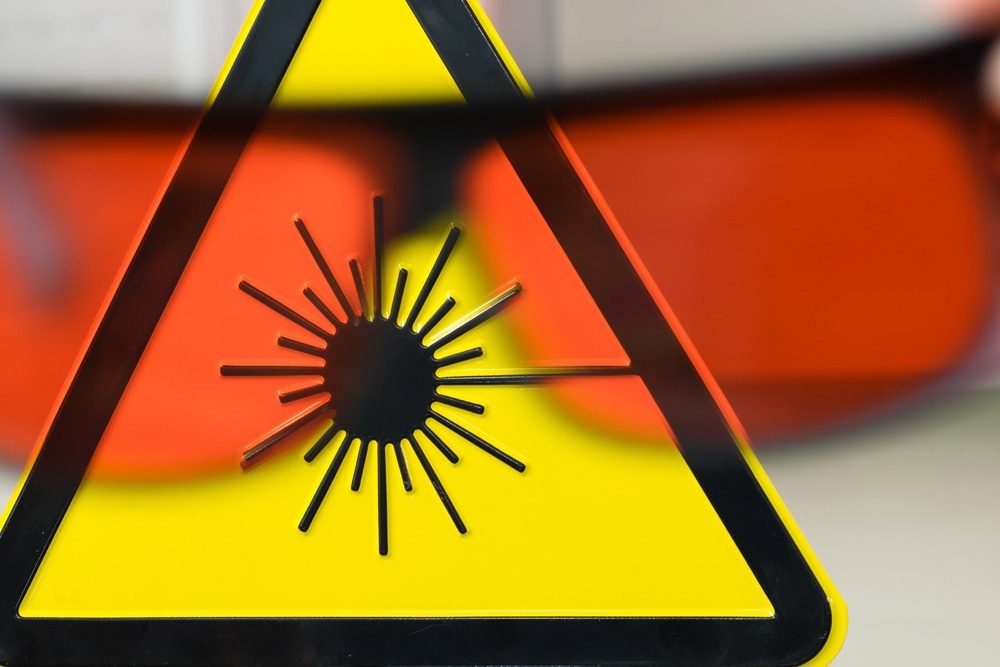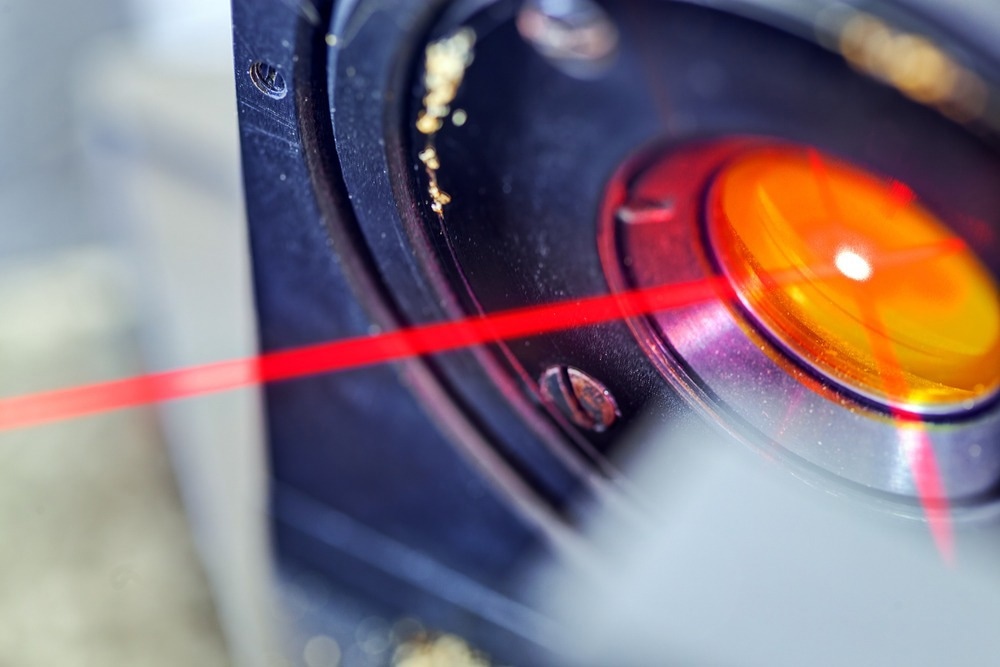Laser radiation safety is of paramount importance in the safe design, implementation, and utilization of lasers, with a focus on minimizing the risk of accidents, especially those involving eye injuries. The potential for even small amounts of laser light to cause permanent eye damage necessitates strict government regulations on the sale and use of lasers.

Image Credit: FrankHH/Shutterstock.com
Why is Laser Safety Important?
Laser radiation injury is primarily caused by thermal effects, although photo-chemical effects may also be a concern for certain wavelengths.
Even moderately powered lasers can cause eye injury, while high-power lasers can cause skin burns. Additionally, the coherence and low divergence angle of laser light can concentrate radiation into an extremely small spot on the retina, potentially causing permanent damage in a fraction of a second.
Lasers with wavelengths between 400 and 1400 nm can penetrate the eyeball and cause heating of the retina, while wavelengths below 400 nm or above 1400 nm are largely absorbed by the cornea and lens, leading to the development of cataracts or burn injuries.
Infrared lasers are particularly hazardous since the body's protective glare aversion response, or "blink reflex," is only triggered by visible light. High power Nd:YAG lasers emitting invisible 1064 nm radiation, for example, may not cause pain or immediate damage to eyesight. Instead, a pop or click noise from the eyeball may be the only indication of retinal damage, with the retina being heated to over 100°C (212°F), resulting in localized explosive boiling and the immediate creation of a permanent blind spot.
It is important to be aware of these hazards and take appropriate safety measures when working with lasers, including wearing appropriate protective equipment and following established regulations and guidelines. By doing so, individuals can minimize the risk of injury and ensure the safe and effective use of lasers.
Not Just the Beam: Other Safety Considerations
Although the laser beam itself poses the most significant danger, high-voltage devices and high-pressure water used for cooling the laser and other electrical equipment can also create hazards.
Lasers can also produce chemical, mechanical, and other hazards that are specific to certain installations, such as heavy metal vapors and asbestos insulation in helium cadmium lasers.
Mechanical hazards may include moving parts in vacuum and pressure pumps, and high temperatures and fire hazards may result from high-powered lasers.
In commercial laser systems, hazard mitigations are commonly present, but older lasers and hobby systems require special care to reduce the consequences of misuse or various failure modes.
Laser Safety Regulations Around the World
In order to protect individuals from the potential harm of laser radiation, various jurisdictions have implemented standards and regulations to define different classes of lasers and the corresponding safety measures required for those who may be exposed to them.
In the European Community, European standards EN 207 and EN 208 outline eye protection requirements and specifications for goggles used during beam alignment. Additionally, EN 60825 specifies optical densities for extreme situations.
In the US, the ANSI Z136 series of standards provide guidance on the use of protective eyewear and other safety measures for laser users.
The US Food and Drug Administration (FDA) regulates laser products under 21 CFR 1040 and requires all class IIIb and class IV lasers sold in the US to have five standard safety features. Lasers intended for use as parts of other components are exempt from this requirement.

Image Credit: Vladimir Nenezic/Shutterstock.com
Some non-portable lasers may not have a safety dongle or an emission delay but may have an emergency stop button or a remote switch.
Copies of the ANSI standards can be purchased directly from ANSI or the official Secretariat to the Accredited Standards Committee (ASC) Z136 and Publisher of this series of ANSI standards, the Laser Institute of America.
Guidelines for Safe Laser Use
In order to minimize the risks associated with laser use, many scientists involved with lasers advocate for the following guidelines.
It is crucial that everyone who uses a laser is aware of the risks, regardless of how much experience they have with lasers. Long-term exposure to invisible risks, such as those posed by infrared laser beams, can actually lead to complacency and a decreased sense of risk awareness.
Optical experiments should be conducted on an optical table with all laser beams confined to the horizontal plane and stopped at the edges of the table. Users should avoid putting their eyes at the same level as the horizontal plane where the beams are, in order to prevent injuries from reflected beams.
No watches or jewelry that might enter the optical plane should be allowed in the laboratory, and all non-optical objects close to the optical plane should have a matte finish to prevent specular reflections.
Eye protection should always be worn by everyone in the room if there is a significant risk of eye injury.
High-intensity beams that can cause fire or skin damage, particularly those from class 4 and ultraviolet lasers, and that are not frequently modified, should be guided through opaque tubes.
Finally, beam and optical component alignment should be performed at a reduced beam power whenever possible.
More from AZoOptics: What are Optical Lattice Clocks?
References and Further Reading
Center for Devices and Radiological (2021). Frequently Asked Questions About Lasers. [Online] U.S. Food and Drug Administration. Available at: https://www.fda.gov/radiation-emittingproducts/radiationemittingproductsandprocedures/homebusinessandentertainment/laserproductsandinstruments/ucm116362.htm (Accessed on 10 April 2023).
CLF (2009). Laser safety checklist. [Online] Central Laser Facility, UK.
Disclaimer: The views expressed here are those of the author expressed in their private capacity and do not necessarily represent the views of AZoM.com Limited T/A AZoNetwork the owner and operator of this website. This disclaimer forms part of the Terms and conditions of use of this website.